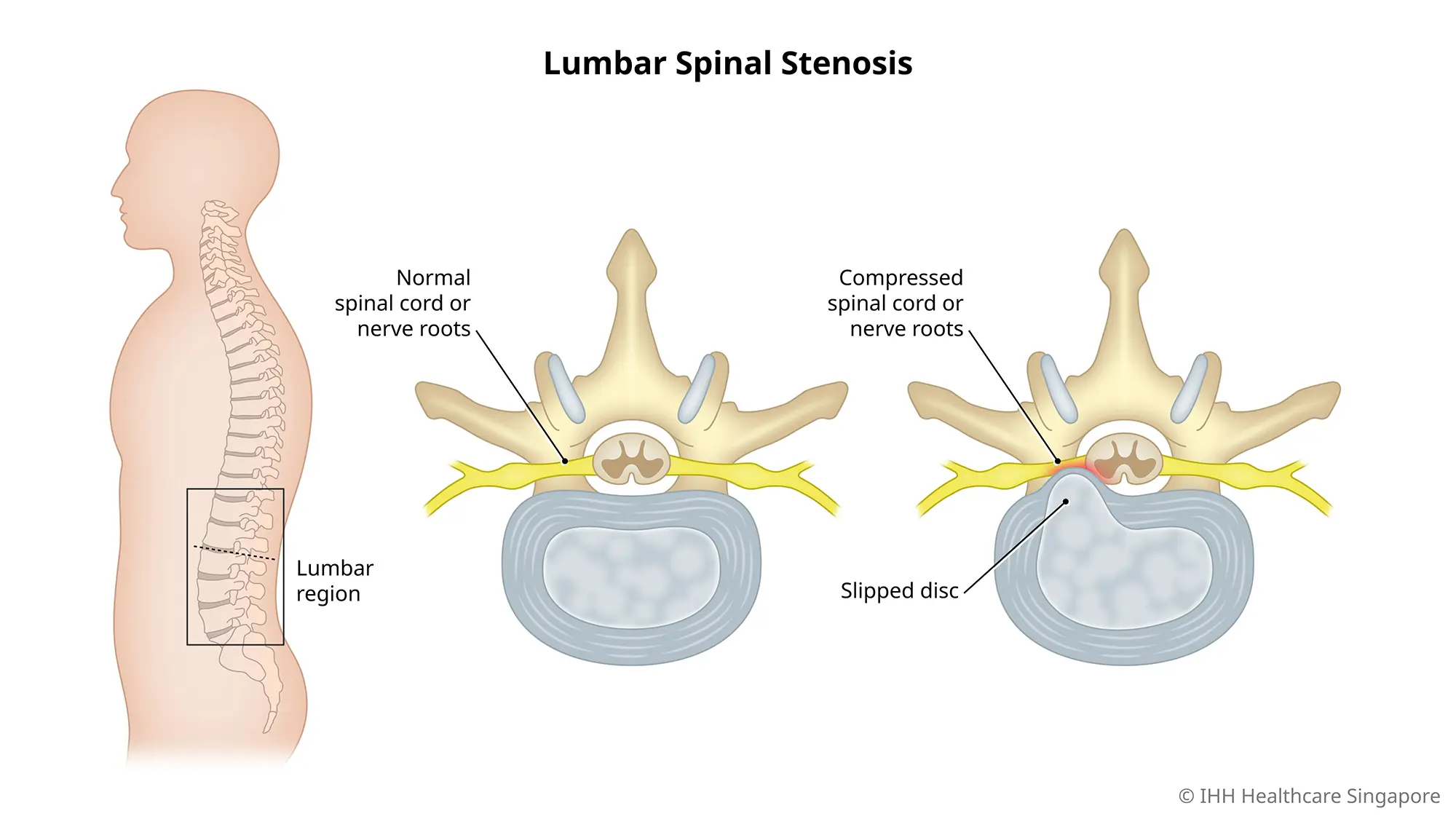-
-
Featured Care Areas

Lumbar Spinal Stenosis
What is lumbar spinal stenosis?
Lumbar spinal stenosis occurs when the space around the spinal cord narrows. This puts pressure on the cord and nerves that travel through the lower back into the legs. It can cause pain to radiate downwards as you walk.
It is a progressive condition which occurs slowly, over many years. It is due to various causes such as spinal discs becoming less spongy with age or the growth of bone spurs, among others. As a result, it is more common in older people.
What are the symptoms of lumbar spinal stenosis?
Symptoms of lumbar spinal stenosis include:
- Back pain
- Burning pain in the buttocks or legs (sciatica)
- Feeling weak or tired in the legs after prolonged walking, which is relieved by sitting down
- Numbness or tingling in the buttocks or legs
- Reduced pain when leaning forward or sitting
- Weakness in the legs or ‘foot drop’ (weakening of muscles that flex the ankle and toes)
What causes lumbar spinal stenosis?
Arthritis, or degeneration of a joint, is the most common cause of spinal stenosis.
As the water content in our discs dry out with age, this leads to settling, or collapse, of the disc spaces and loss of disc space height. As a result, there is increased pressure on the facet joints and the protective layer of cartilage gets worn away.
Other factors that contribute to lumbar spinal stenosis include:
- Bony growths or bone spurs, which form in response to the wear and tear from osteoarthritis, which grow into the spinal canal. A condition called Paget’s disease can also lead to bony growths.
- Herniated discs when discs crack, allowing its contents to escape and press on the spinal cord.
- Thickening of ligaments, which happens over time, can bulge and intrude on the spinal canal.
- Abnormal growths in the spinal cord, including cancer though this is rare.
- Spinal injuries from accidents and other forms of trauma such as dislocations or fractures, and swelling that accompanies such injuries.
You face a higher risk of developing lumbar spinal stenosis if you:
- Are a woman
- Are born with a narrow spinal canal
- Are older than 50 years
- Have had a past injury to the spine
- Have a congenital or genetic disease that affects bone and muscle development
What are the complications and related diseases of lumbar spinal stenosis?
Spinal stenosis may result in a condition known as cervical myelopathy.
In the late stages, cervical myelopathy results in degenerative changes in the neck and leads to severe dysfunction of the nerves. This may cause:
- Weakness
- Inability to control movement
- Loss of urine and bowel function
- Loss of ability to stand or walk
This coverage checker is brought to you by Health Insured, an online resource that helps you understand your health coverage in Singapore.
This page has been reviewed by our medical content reviewers.
Need help?
For enquiries, please call
+65 6377 3737
For appointment bookings, please WhatsApp
+65 8111 3777




